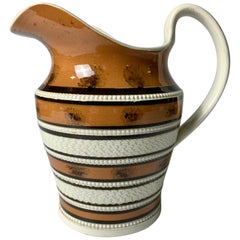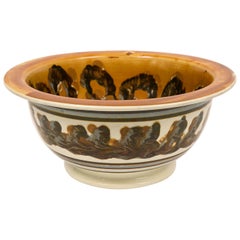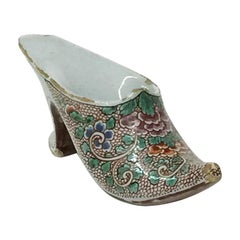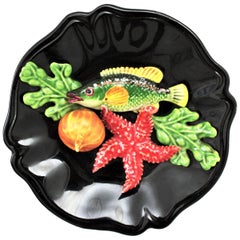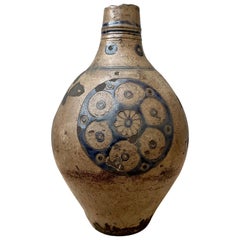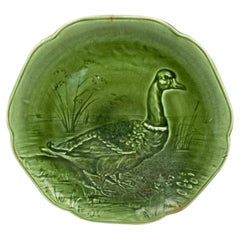Earthenware Ceramics
Early 19th Century English Country Antique Earthenware Ceramics
Earthenware
1830s English Folk Art Antique Earthenware Ceramics
Creamware
Mid-18th Century Dutch Antique Earthenware Ceramics
Earthenware
Mid-20th Century French Mid-Century Modern Earthenware Ceramics
Majolica, Pottery, Ceramic
Late 18th Century German Folk Art Antique Earthenware Ceramics
Earthenware
1890s French Country Antique Earthenware Ceramics
Ceramic, Majolica
21st Century and Contemporary Italian Renaissance Earthenware Ceramics
Ceramic, Majolica
16th Century Italian Renaissance Antique Earthenware Ceramics
Maiolica
20th Century French Mid-Century Modern Earthenware Ceramics
Ceramic, Majolica
1890s French French Provincial Antique Earthenware Ceramics
Ceramic, Faience
Early 19th Century English Antique Earthenware Ceramics
Creamware
1890s British Victorian Antique Earthenware Ceramics
Ceramic, Faience
1940s French Modern Vintage Earthenware Ceramics
Ceramic, Earthenware
1880s French Country Antique Earthenware Ceramics
Majolica
1890s French Art Nouveau Antique Earthenware Ceramics
Ceramic, Faience
1950s Swedish Scandinavian Modern Vintage Earthenware Ceramics
Faience
1880s French Country Antique Earthenware Ceramics
Ceramic, Faience
16th Century Italian Renaissance Antique Earthenware Ceramics
Maiolica
Mid-18th Century Dutch Antique Earthenware Ceramics
Earthenware
Mid-20th Century Swedish Mid-Century Modern Earthenware Ceramics
Earthenware
19th Century English Victorian Antique Earthenware Ceramics
Majolica
21st Century and Contemporary Italian Modern Earthenware Ceramics
Ceramic, Majolica
Early 1800s English Chinoiserie Antique Earthenware Ceramics
Pearlware
1770s Italian Rococo Antique Earthenware Ceramics
Maiolica
1960s French Modern Vintage Earthenware Ceramics
Ceramic, Earthenware
1890s French Rustic Antique Earthenware Ceramics
Ceramic, Faience
Late 18th Century English Neoclassical Antique Earthenware Ceramics
Creamware
1890s French Art Nouveau Antique Earthenware Ceramics
Ceramic, Majolica
1960s French Modern Vintage Earthenware Ceramics
Ceramic, Earthenware
1890s French Country Antique Earthenware Ceramics
Faience
1970s German Mid-Century Modern Vintage Earthenware Ceramics
Earthenware
1860s French Renaissance Revival Antique Earthenware Ceramics
Faience
Mid-20th Century French Earthenware Ceramics
Earthenware
19th Century French Antique Earthenware Ceramics
Majolica
19th Century French French Provincial Antique Earthenware Ceramics
Earthenware
1970s Post-Modern Vintage Earthenware Ceramics
Earthenware
Early 1900s French Country Antique Earthenware Ceramics
Ceramic, Faience
1870s English Aesthetic Movement Antique Earthenware Ceramics
Earthenware
1920s Finnish Art Deco Vintage Earthenware Ceramics
Faience
Early 1900s German Country Antique Earthenware Ceramics
Ceramic, Faience, Majolica
Late 19th Century English Victorian Antique Earthenware Ceramics
Ceramic, Earthenware
1960s French Modern Vintage Earthenware Ceramics
Ceramic, Earthenware
Mid-19th Century English Victorian Antique Earthenware Ceramics
Majolica
19th Century English Victorian Antique Earthenware Ceramics
Majolica
1930s German Art Deco Vintage Earthenware Ceramics
Ceramic, Majolica
19th Century Italian Rococo Antique Earthenware Ceramics
Majolica
1950s Japanese Other Vintage Earthenware Ceramics
Majolica
1880s American Antique Earthenware Ceramics
Majolica
2010s Earthenware Ceramics
Earthenware, Acrylic
1860s English Victorian Antique Earthenware Ceramics
Majolica
1860s English Victorian Antique Earthenware Ceramics
Earthenware, Majolica, Pottery
2010s American Arts and Crafts Earthenware Ceramics
Other
20th Century French Earthenware Ceramics
Ceramic, Majolica
19th Century British Aesthetic Movement Antique Earthenware Ceramics
Earthenware
Early 20th Century English Chinoiserie Earthenware Ceramics
Faience
Late 19th Century Antique Earthenware Ceramics
Ceramic, Earthenware, Majolica
Early 20th Century French Earthenware Ceramics
Faience
20th Century English Earthenware Ceramics
Earthenware, Pottery
21st Century and Contemporary Mexican Spanish Colonial Earthenware Ceramics
Ceramic, Clay, Majolica
Early 20th Century French Earthenware Ceramics
Faience
